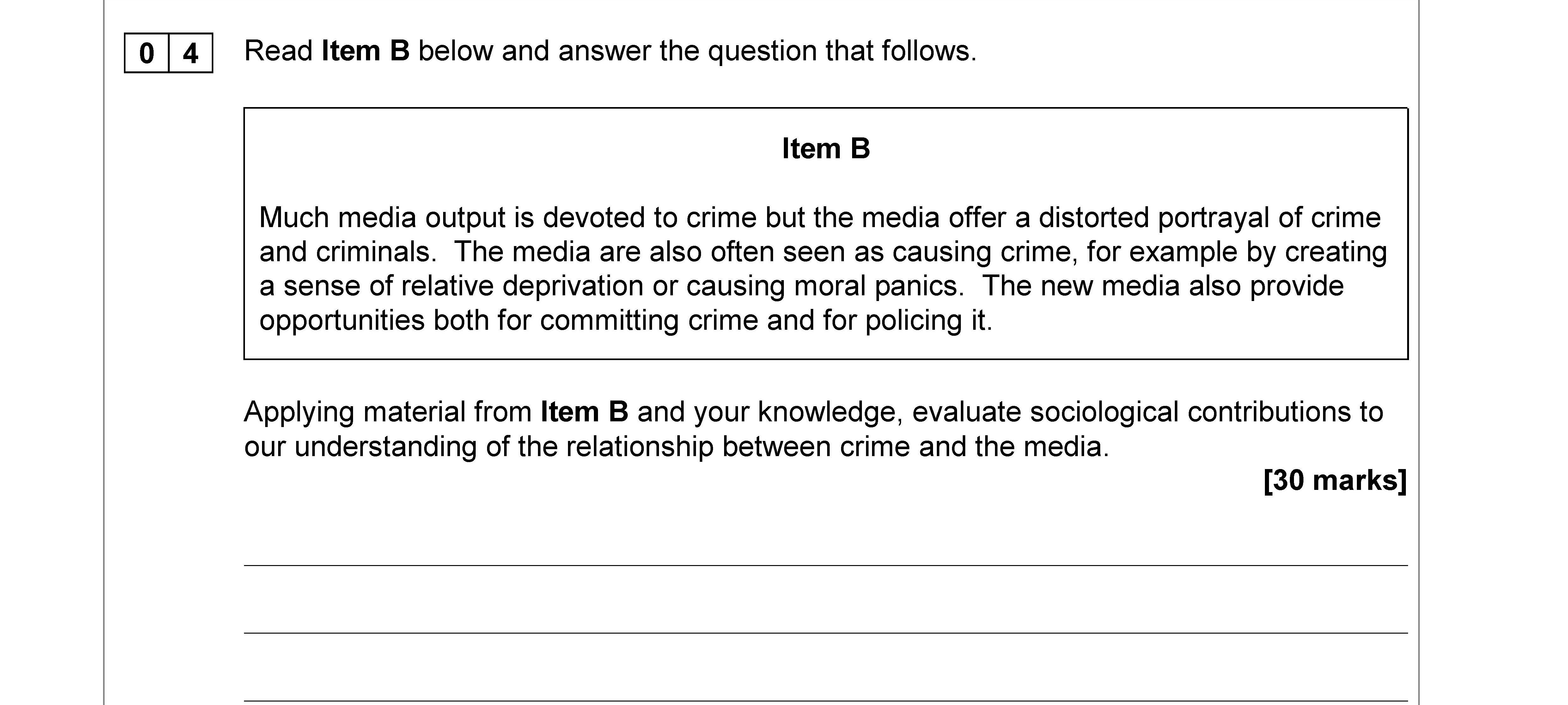Photo AI
Applying material from Item B and your knowledge, evaluate sociological contributions to our understanding of the relationship between crime and the media. - AQA - A-Level Sociology - Question 4 - 2017 - Paper 3
Question 4

Applying material from Item B and your knowledge, evaluate sociological contributions to our understanding of the relationship between crime and the media.
Worked Solution & Example Answer:Applying material from Item B and your knowledge, evaluate sociological contributions to our understanding of the relationship between crime and the media. - AQA - A-Level Sociology - Question 4 - 2017 - Paper 3
Step 1
Evaluate the Distorted Portrayal of Crime
Answer
The media often presents a sensationalized view of crime, which can distort public perception. This can lead to moral panics, as suggested in Item B, where the media's focus on crime creates an exaggerated sense of fear. Sociologists such as Cohen have analyzed how media coverage can shape societal reactions and contribute to labeling individuals as deviant.
Step 2
Assess the Role of Surveillance
Answer
Surveillance, as mentioned in Item B, is a critical aspect of modern crime control. It not only serves to prevent crime but also creates a sense of control over individuals. Foucault’s concept of the ‘panopticon’ is relevant here, illustrating how being watched alters behavior and impacts the relationship between society and crime.
Step 3
Consider Social Contexts and Crime Causes
Answer
Material deprivation and social inequalities, often highlighted in sociological studies, can be exacerbated by media representations. The media can influence perceived norms around crime, shaping the understanding of causative factors. Research indicates that when crime is depicted mainly among marginalized communities, it may reinforce societal prejudices and further entrench social divisions.
Step 4
Evaluate Policy Implications
Answer
The insights gained from understanding the media's role in crime can significantly inform public policy. Arguments for stricter crime prevention measures frequently draw on media narratives. However, evaluating such policies critically, one must consider whether these measures address underlying social issues or merely target surface-level behaviors.
